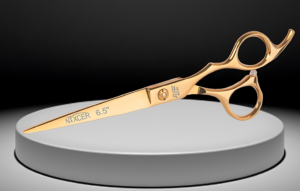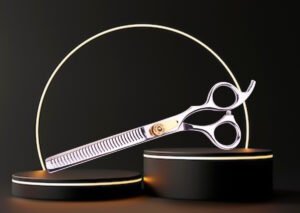For hair stylists, mastering the basics of hair cutting is essential. However, advancing your skills to include more refined and complex techniques will set you apart as a professional. Advanced techniques with hair cutting scissors not only enhance your precision but also allow you to create diverse styles that cater to your clients’ needs. Here, we’ll explore several advanced techniques that will help elevate your cutting game.
1. Deep Point Cutting
Deep point cutting is an advanced version of traditional point cutting, used to create more dramatic texture and remove bulk from the hair. Instead of lightly snipping into the hair’s ends, deep point cutting involves cutting farther into the length of the hair at a steep angle. This technique works well for adding texture to medium to short hairstyles, creating a layered, voluminous look.
Tip: Use deep point cutting sparingly to avoid over-thinning the ends. Keep your cuts controlled for a balanced finish.
2. Razor Shear Cutting
Razor shear cutting is a technique that gives the hair a soft, feathery finish. It involves using a straight razor along with your shears to slice into the hair, creating a tapered, natural look. This method works particularly well for medium-length cuts and clients with thick hair who want a more lightweight style.
Tip: Always use a sharp razor to avoid pulling or damaging the hair, and make sure the hair is damp before you start cutting to achieve a smoother cut.
3. Slicing
Slicing is a sophisticated technique that helps remove weight and add movement to the hair without creating layers. You slide the scissors along the length of the hair, opening and closing them gently to create soft separation between the strands. Slicing works best for longer hairstyles and adds subtle texture while keeping the overall shape intact.
Tip: Use very light pressure with this technique. Heavy-handed slicing can leave the hair looking uneven or cause fraying.
4. Channel Cutting
Channel cutting is a highly advanced technique that involves cutting vertical or horizontal channels into the hair to create movement, texture, and a sense of volume. This technique is most effective for clients who want edgy or artistic hairstyles. With channel cutting, you can create layers that blend into each other seamlessly, adding depth to the haircut.
Tip: It’s important to have complete control over your shears when performing channel cutting. Keep the hair sectioned and work in small areas for better precision.
5. Back Cutting
Back cutting, also known as reverse cutting, is a technique where you cut into the hair in the opposite direction to the way it naturally falls. This is great for adding texture and volume to layers or thinning out thick hair. Back cutting can soften blunt edges and give hair a more tousled, relaxed look.
Tip: Use this technique on dry hair for better visibility of the results and greater control over the texture you’re creating.
6. Twist Cutting
Twist cutting is a technique that adds texture and movement, particularly to curly or wavy hair. You take small sections of hair, twist them tightly, and then snip into the twists with the shears. This method creates a soft, textured effect that enhances the natural movement of the curls or waves.
Tip: Be mindful of how much hair you remove when cutting into twists. Small, gradual snips are key to maintaining control over the amount of texture you create.
7. Precision Blunt Cutting
While blunt cutting may seem basic, precision blunt cutting requires a high level of skill and attention to detail. This technique is all about creating clean, sharp lines, particularly for styles like the bob or pixie cut. It requires steady hands, sharp shears, and an understanding of the client’s head shape to ensure that the cut is symmetrical and polished.
Tip: Maintain consistent tension in the hair as you cut, and always double-check your lines from different angles to ensure accuracy.
8. Texturizing with Thinning Shears
Thinning shears are a specialized tool that allow you to remove weight from thick hair without compromising length or shape. Advanced texturizing with thinning shears can help you blend layers seamlessly, thin out bulky sections, or soften harsh lines. This technique is especially useful for thick or coarse hair types.
Tip: Use thinning shears sparingly. A little goes a long way, and over-thinning can lead to unwanted patchiness or thin-looking hair.
Final Thoughts
Advancing your skills with professional hair cutting scissors opens up a world of creative possibilities for your clients. Techniques like deep point cutting, slicing, and razor shear cutting can add texture, movement, and volume to your cuts, while precision blunt cutting and back cutting allow for polished, professional finishes. As with any skill, mastering these advanced techniques takes time and practice, but with dedication, you’ll be able to offer your clients the best possible results, tailored to their individual hair types and styles.



